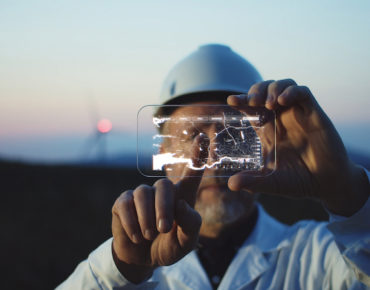Data-rich Physical Ops Is Poised for AI Enablement

Artificial intelligence is no longer relegated to tech-heavy, research-oriented fields like data science or robotics. Developments in AI have expanded its reach in many sectors, including healthcare, energy, and financial services.
Though these technologies have catapulted modernization in many industries, the sector of physical operations has seen less technological progress, according to Samsara, purveyor of a real-time platform aimed at increasing the safety, efficiency, and sustainability of operations. The company says the people who keep the world’s physical operations going, such as drivers, field technicians, safety managers, warehouse supervisors, and similar roles, have been historically underserved by technology, but this is now changing thanks to AI technology becoming more practical for these roles.
“AI has really evolved from this collection of novelties to solutions that really are delivering value now. That's partly because from an AI perspective, the operations industry is largely underserved,” said Evan Welbourne, head of machine learning and computer vision at Samsara. “So, in many cases, the AI applications might be radically practical. Actually, they might be even straightforward, and it's just a matter of iterating closely with our customers and applying standard AI techniques.”
Welbourne was a participant in a panel discussion, “The Future of Transportation,” led by IDC Future of Operations Research VP Leif Eriksen. IDC is tracking Samsara as a company to watch for its AI-powered platform, the Samsara Connected Operations Cloud. The platform is driven by the real-time data it collects for analyzing and optimizing physical operations.
At the center of IDC’s Future of Operations program lies “data-driven operations,” says Eriksen: “It has always been about ‘How do we use data to drive higher levels of performance including efficiency, reliability, safety, and increasingly, sustainability?’” he said. “What’s changed is the ubiquity of the data, the ability to connect anytime anywhere, the ability to create new insights from the data through various forms of AI and machine learning and other kinds of analytics, and the ability to share the data across an extended value chain. We’re really on the cusp of becoming truly data-driven.”

Suyog Deshpande demos an operations map on the Samasara platform showing the real-time location and routes of trucks and equipment. (Source: Samsara)
Suyog Deshpande, Samsara’s head of product and partner marketing, gave a demo of the data-driven technology the company offers its customers. A detailed map shows customers their entire physical operations including data regarding vehicles, equipment, assets, trailers, and worksites. The platform collects data about engine diagnostics, asset optimization and utilization, site security and safety, all of which flows into the Samsara platform in near real time, allowing customers to analyze and act on this data within a single platform.
Jeff Hausman, chief product officer at Samsara, says this solution can help mitigate challenges such as supply chain disruption, operating efficiency, or the move to electrification and sustainability. Hausman went on to give an example of a customer that benefitted from Samsara’s platform, trucking company GP Transco. He said the company has saved over 205,000 gallons of gasoline by reducing idling time and helping improve fleet efficiency by giving administrators, dispatchers, and customers real-time data regarding fuel use. This translated to $350,000 in savings for this company. Another Samsara customer, infrastructure services company Artera, identified underutilized assets using the platform to achieve $11 million in savings that it could then reinvest in other parts of the business.
As far as the future of AI for physical operations, Welbourne said the biggest opportunity for AI is making sense of the data overload that many businesses face, as deriving value from a broad dataset can be a bit like finding a needle in a haystack. He mentioned the possibility of a more refined AI interface that could plug in ChatGPT or similar NLP technologies to allow question-and-answer querying and more finely tuned results for specific use cases.
“One of those to look at in the next year is applying AI to enhance the interface between customers and their operations…There is this great opportunity to apply self-supervised learning and similar techniques to distill knowledge all-around. The operations space for example, we might be able to distill a latent space about transportation in general and use that base model to rapidly build new high performance models for this broad variety of use cases and safety telematics, fuel savings, and many other different cases. So, I think that's another key area we'll see grow in the next year,” said Welbourne.
Hausman is also looking to the future: “I’m personally fascinated with how AI will continue to evolve and help us find ways to bring new types of suggestions to answer new problems for customers as we partner with them. I think it’s fascinating when you look at the massive dataset that we have for individual customers, holistically in the anonymous aggregate way, to identify and think about what we can do to push forward on efficiency, safety, and sustainability for our customers.”










